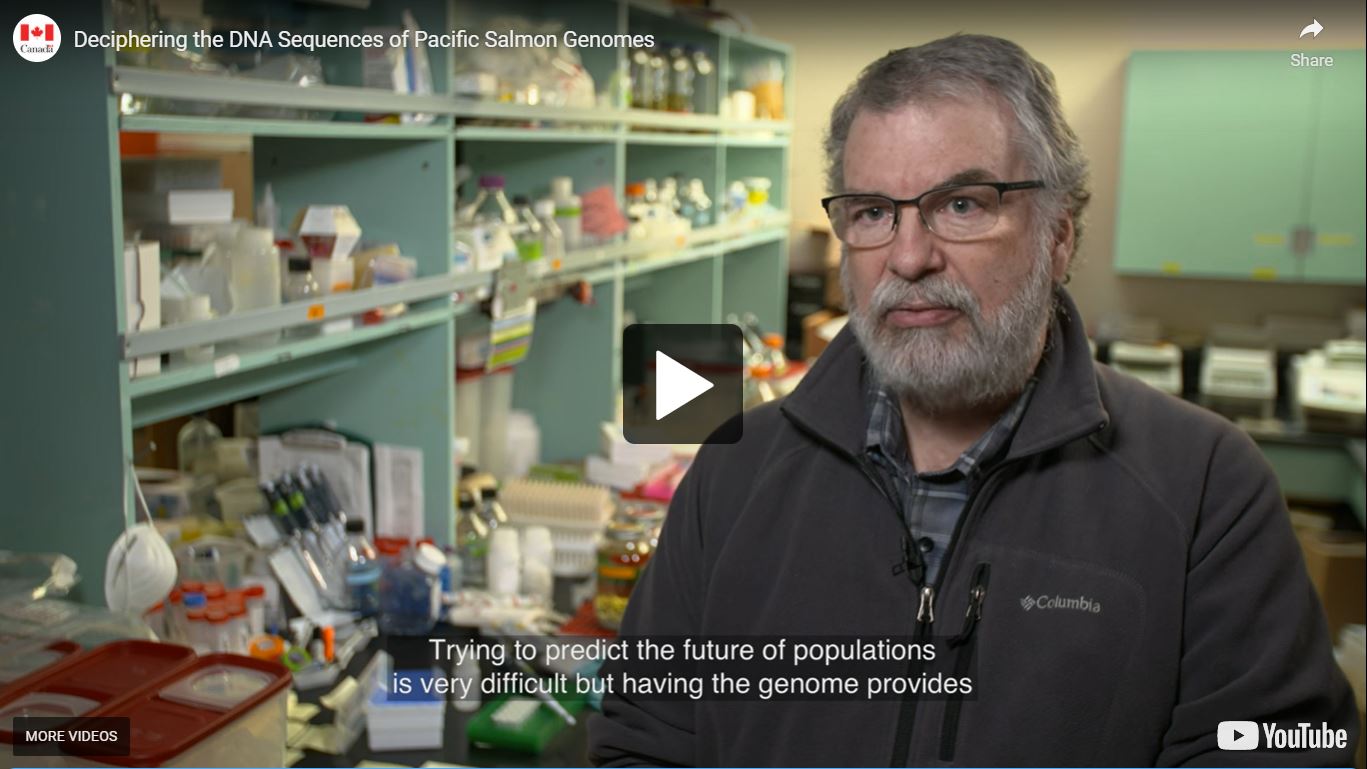Whole genome sequencing of Pacific salmon
Pacific salmon have social and cultural significance for many Canadians and play a vital role both ecologically and economically throughout the Pacific Region. Understanding the genetic basis for the growth, survival and adaptation of these species is key to ensuring the sustainability of their populations. We work in collaboration with the University of Victoria and Génome Québec to map and sequence the entire genomes (all genetic information) of these iconic species. This information will enhance the management and assessment of Pacific salmon now and into the future.
On this page
About whole genome sequencing
Whole genome sequencing technology can piece together the entire deoxyribonucleic acid (DNA or genetic information) sequence of an organism, which can help inform further studies on the species. Scientists follow the steps below to map and sequence the entire genomes of Pacific salmon:
- scientists collect tissue samples
- chemicals are used to break open cells in the tissue sample to release the DNA
- DNA is broken down into smaller fragments by various methods (e.g., enzymes)
- fragmented DNA is prepped for sequencing
- machines are used to read and record the DNA sequence for each fragment
- a computer is used to assemble the fragmented DNA sequences, like arranging all the pieces of a jigsaw puzzle
- the genome sequence is labelled to create a model that can be used to locate genes within the genome of a species
- this information is entered into a global database, accessible by scientists worldwide, to be used in further studies on fish population
Why it matters
Whole genome sequences allow scientists to understand the full story of how a fish will survive, grow, reproduce and resist disease under changing pressures. This knowledge can be used to:
- better understand fish stock health today
- predict how stocks might respond to climate change or disease outbreaks in the future
The blueprints for all of an organism’s traits are written in the genome. Whole genome sequences provide the templates that can be used by scientists to:
- improve our understanding of the genetic traits that influence survival and reproduction in nature (e.g., growth, disease resistance, temperature tolerance, adaptability and resilience)
- better understand breeding dynamics and genetic health for stock assessment
- better understand the interactions between wild and cultured fish
- improve traceability of fish products in the marketplace, on the farm or in nature
- enhance genetic stock identification and delineation
Activities
The genome is like a blueprint for how to make a Pacific salmon. The sequencing and assembly of a genome is an enormous task that involves piecing together more than a billion pieces of information held in the DNA of an organism.
DFO scientists have been collaborating with the University of Victoria and Génome Québec to map and sequence the genomes of the salmon listed below. This is a valuable resource for researchers and their understanding of how genes work, interact, and influence the traits, such as:
- growth
- size
- behaviour
- resistance to disease
All full-genome sequences are available in Open Access public databases:
These genomic maps will provide a foundation for research to study and monitor the effects of stressors on these species, and to better conserve and manage their populations. These new genomics resources are already facilitating further studies by the science community.
Videos
Related research
- The sockeye salmon genome, transcriptome, and analyses identifying population defining regions of the genome
- Chinook salmon (Oncorhynchus tshawytscha) genome and transcriptome
- Genome assembly, transcriptome and SNP database for chum salmon (Oncorhynchus keta)
- The pink salmon genome: Uncovering the genomic consequences of a two-year life cycle
Related links:
- Date modified:

